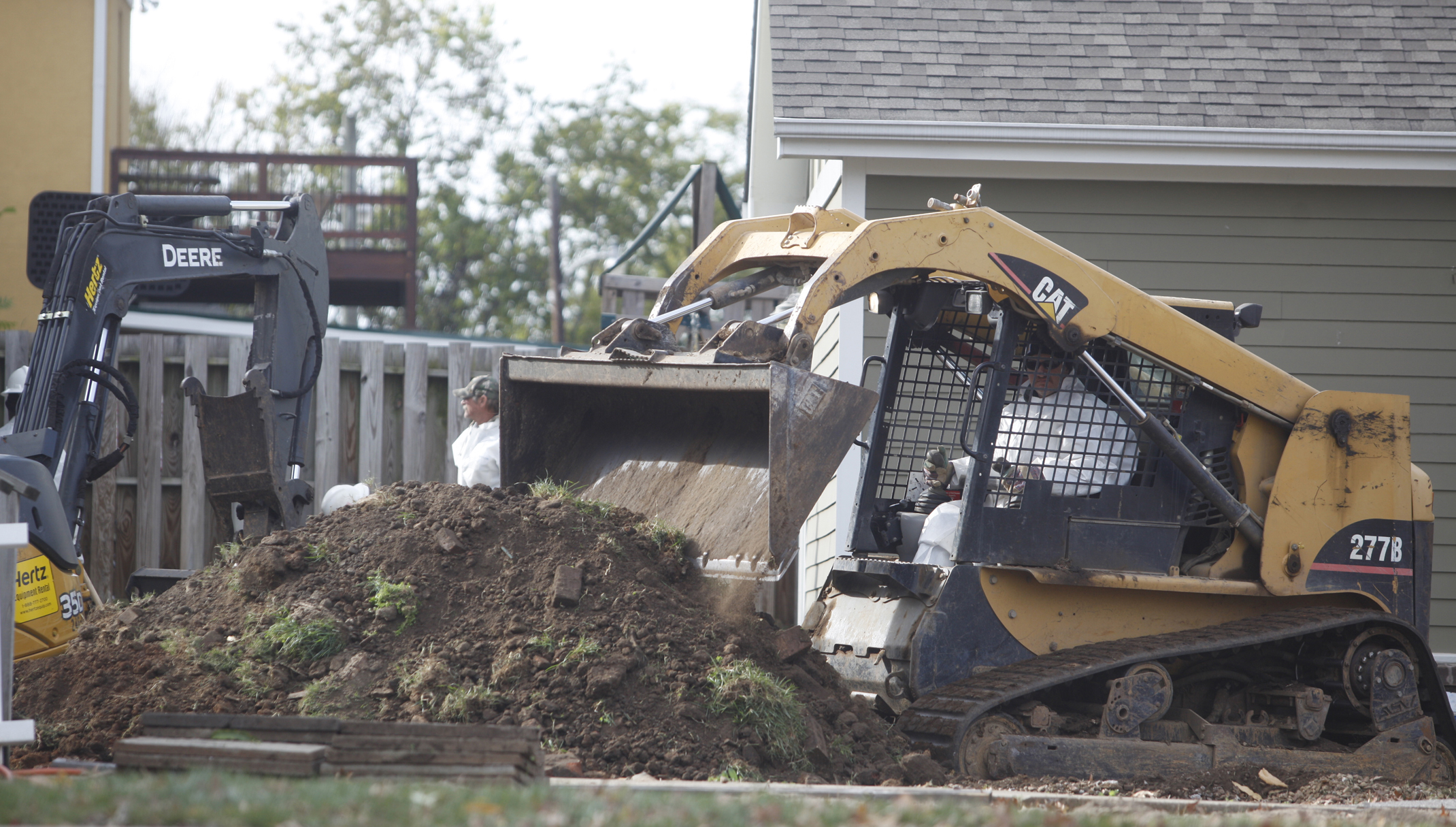TO GET HELPThe EPA has opened a community outreach center at 27 W. Main St. for informal meetings and to provide a daily point of contact for residents with questions.The toll-free number for information or ask questions is 1-877-718-3752, ext. 28463.Source: The U.S. Environmental Protection Agency
Environmental investigators have taken 230 soil samples in downtown neighborhoods from Missionary Ridge to St. Elmo and found high lead levels in more than 10 percent of them.
That means the possibility of dangerous lead levels in soil is more widespread than just the Southside, where state and federal environmental regulators began a lead removal project Sept. 24.
"There's an investigation that's ongoing," said Troy Keith, Chattanooga field office manager for the Tennessee Department of Environment and Conservation's Division of Remediation.
He said TDEC and the Environmental Protection Agency already were concerned about extended areas of lead contamination in Chattanooga.
"We do intend to follow up," Keith said.
Of the 230 sites, 26 had lead amounts of more than 400 parts per million, officials said. Normal levels are 50 to 75 parts per million.
Keith said it's premature to name the sites with high lead levels. Samples were taken in rights of way because regulators may not go uninvited onto private property to test soil, he said.
Investigators took samples when they saw very dark and black soil such as that found in the Southside, he said. In areas where they found high lead levels, they will send letters to residents or knock on doors with more information, said Keith and TDEC spokeswoman Meg Lockhart.
Studies have shown that even low levels of lead can damage the brain and nervous system and impair learning skills, especially in children.
More questions
Where the lead came from is a mystery.
But Keith and Perry Gaughan, the EPA coordinator for the Southside lead cleanup project, said examinations show it does not come from iron foundry sands or paint chips, two common sources.
"This stuff is so ambiguous, we really can't pinpoint the source," Gaughan said.
The Tennessee Department of Health asked TDEC last year to find out how a Southside resident was exposed to lead. If a responsible party can be found, the person or entity could help pay for the Southside cleanup, which now is being financed with federal Superfund money.
The cleanups will not cost homeowners or landlords at all, according to Keith.
"We've made it clear to the residents they are not financially liable," he said.
EPA contractors also are completely restoring the dug-up yards, he added.
"They have gone to extreme lengths not to disturb large trees -- sometimes even using brooms to sweep the soils away from roots," Keith said.
To track the origin of the lead, investigators are using century-old maps that were made for insurers and fire departments showing the locations of foundries, businesses and now-defunct rail lines.
What they don't seem to show -- at least not near the Southside -- is a brass factory, which Keith said could have created waste that included lead.
Gaughan said the heart of the Southside -- Read, Mitchell and Carr streets -- once was part of a huge rail yard. After the city flooded several times around the turn of the 20th century, clay was moved to part of the yard and homes were built there.
But Keith and Gaughan said the lead shows up in a 6-inch layer that appears to have been brought in as topsoil.
"You can imagine someone building a home and needing topsoil and just looking for a good, dark-colored soil. And they found it and they put it on their property," Gaughan said.
Residential concerns
Keith said not all Southside residents would let regulators test or work on their property.
But health and environmental officials still are trying to tell residents the cleanup will not cost them anything and should improve their property's value.
Walking with their baby recently in the Southside, residents Ben and Bethany Weaver said they are not worried about the yard in their new home, built in 2005.
"I don't feel concerned, but I feel aware," Ben Weaver said.
Still, some Chattanoogans are worried.
Rose Swanson said her family moved to East Lake from Pennsylvania in July after learning that her 3-year-old daughter had high blood lead levels from a home there. The child must have monthly blood tests to make sure the lead levels are receding. But after living in East Lake for the past several months, the girl's lead level has spiked again, Swanson said.
She believes the soil in the backyard of her East Lake rental home may be the reason.
Cliff McCormick, a Chattanooga architect who lives in Highland Park, said he had his 1905 home and yard tested by Alternative Actions, a professional lead abatement company, long before the Southside problems came to light.
The testing found lead from paint chips inside the house and out, and McCormick did the outdoor lead abatement himself, putting in a new layer of gravel and soil around the home's perimeter. He said he hired a contractor to remove the lead inside.
When he first heard about the EPA cleanup in the Southside, he said, he was mad that homeowners there were getting free lead removal.
"But that was before I learned that it wasn't from paint chips, but was because of contamination from a former industrial use. Now I'm no longer upset," McCormick said.
He said renters and buyers should know that Realtors and landlords must give them a statement saying they know of no lead contamination risks. He also said residents should allow regulators to test their yards.
"If they'd ever seen anyone with lead poisoning, they'd realize they are being vain and silly," he said. "My bet is some just don't want to see the test for that reason [the lead disclosure statements]. They just want to smile and wink."
